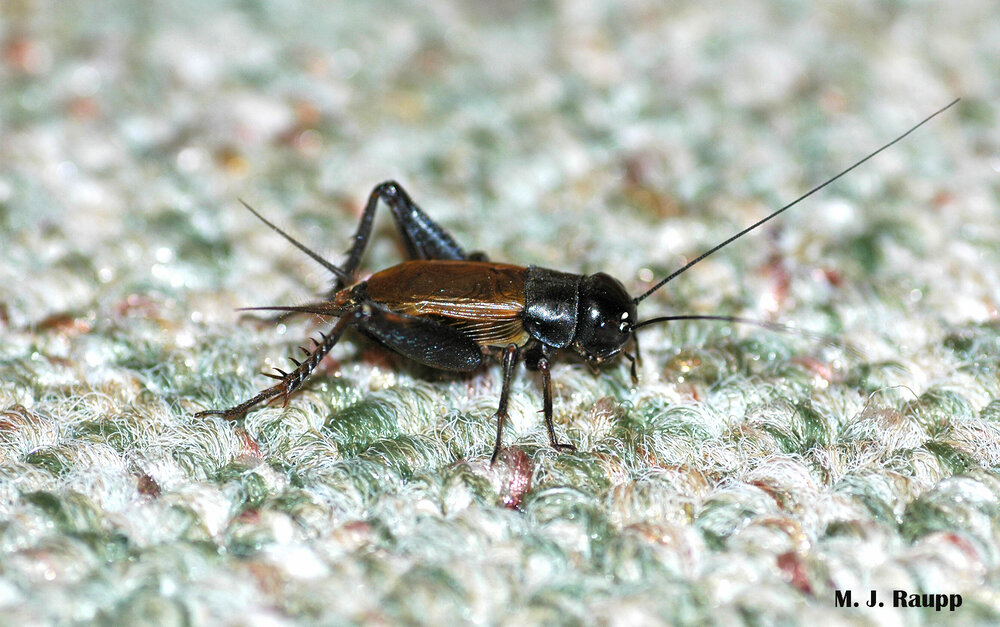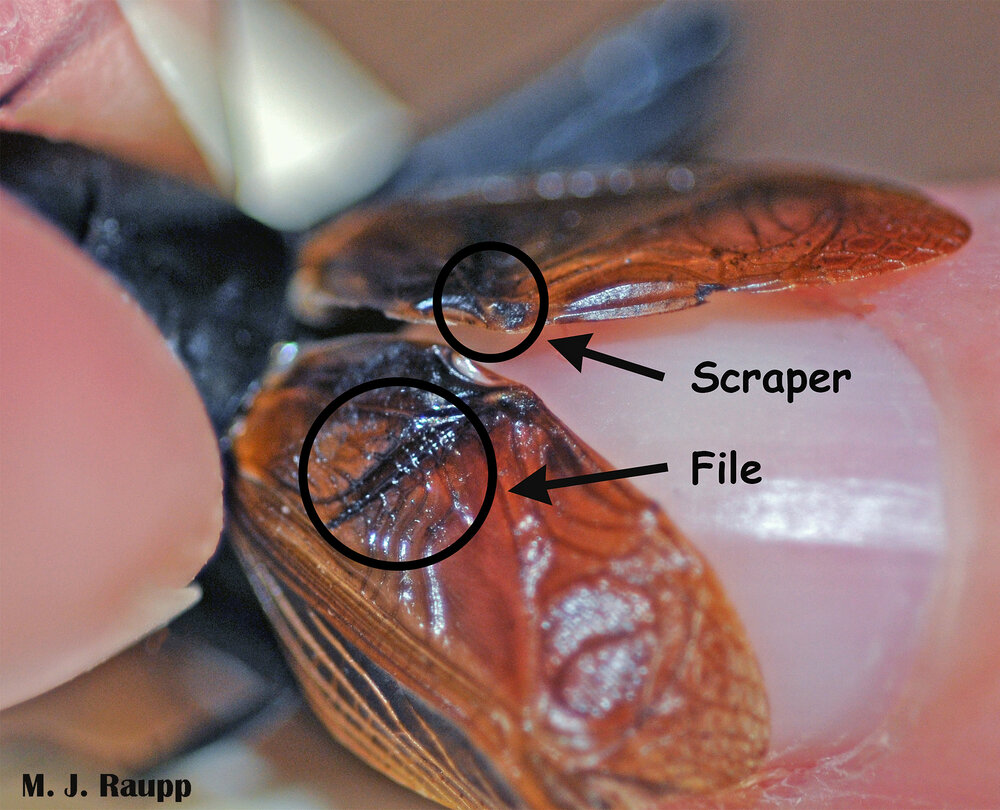What’s all this chirping about? Ask the fall field cricket, Gryllus pennsylvanicus

While some home invaders are unwelcomed guests, the annual visit by field crickets always provides a bit of alright.
In previous episodes we visited rather unsavory home invaders like stink bugs and camel crickets. This week let’s meet a most entertaining and downright amusing visitor, the fall field cricket. Several weeks ago, chirps from the basement heralded the annual invasion of field crickets to my home. Last week at 4:35 am I was awakened by the loud earnest chirping of a field cricket somewhere in the basement. With my sleep seriously disturbed and my cell-phone on the nightstand, I seized the opportunity to see how well chirps of this diminutive troubadour tracked ambient temperature. Here’s how it works. As you know, insects are cold blooded. Their body temperature is more or less the same as the environment that surrounds them unless the insect is basking in the sun or using muscles to elevate its temperature like the dobsonfly we met in a previous episode. Many years ago, a noted entomologist, Richard Alexander, demonstrated a simple relationship between ambient temperature and the how often a cricket chirped. Simply count the number of chirps in 15 seconds, add 37, and you will approximate the ambient temperature in degrees Fahrenheit. With sleep impossible, cell phone in hand, stopwatch enabled, I sampled my cricket’s chirps several times at 15 second intervals over the next few minutes. The average number of chirps per 15 seconds was 40. So, this little guy (only males chirp) reported my household temperature to be 40 + 37, or roughly 77 degrees. A quick check of the household digital thermostat revealed a temperature of 74 degrees. So, the cricket’s estimate was but a few chirps away from being spot on.
This little field cricket demonstrates his skill at helping humans estimate ambient temperatures. Counting the number of chirps in 15 seconds and adding 37 provides an estimate of ambient temperature. Let’s see how well this works.

Melodious male crickets bear a multi-ridged structure called the file on one forewing. The opposite forewing bears a hardened structure called the scraper. As wings open and close, the file moves across the scraper creating vibrations, chirps, that resonate from the cricket’s wings.
Although some might think so, helping humans figure out ambient temperature is unlikely the reason why crickets chirp. A few years ago, I tracked two male crickets, one of which was missing a hind leg, and a rather portly female. Never one to stand in the way of romance, I captured the trio and placed them in a small terrarium. Within moments the smaller male, the five-legged fellow named Pete, challenged his cohabitant, Bud, to a duel that resulted in boisterous chirping, snapping of jaws, and grappling with forelegs. The more aggressive Bud soon vanquished his challenger and Pete retreated to a quiet corner of the terrarium. Crickets battle for food and mates and chirping is a part of this. For centuries Chinese gamblers have wagered high stakes on the outcome of cricket fights. An interesting trick used by the cricket handlers to resuscitate losers of bouts is to shake the defeated warriors and toss them in the air several times. This dramatically reduces the recovery time and allows the small combatants to return to the arena in minutes rather than the regular convalescent period of hours or days. A study published in Nature scientific journal confirmed the success of this therapy in helping defeated crickets regain their fighting spirit. Rather than interrupt Nature’s course, I allowed Pete to sulk in the corner. Shortly after his victory, Bud initiated a series of soft chirps and his efforts were soon rewarded by a visit from the robust female, Wendy.
What useful information is carried in the male cricket’s song other than the typical male plea for female attention? A fascinating study by two Finnish scientists of the Mediterranean field cricket, Gryllus bimaculatus, found a link between the male cricket’s song and his immune response. Troubadours with a highly attractive song also had superior immune systems. If the ability to ward off diseases due to superior immune function is passed along to progeny, then females that choose a mate with an enhanced immune system may ensure better survival of their offspring. By demonstrating his superior immune system with a song, the male cricket may win the lady.
One last thought about the cricket and his song relates to Old Man Winter, who is just around the corner. Of course, once winter’s chill arrives in a few weeks and temperatures plummet, crickets will not be chirping at all. Rather than depending on crickets to let you know how cold it is outside, time will be better spent inside pondering crickets and their songs over a mug of steaming hot chocolate.
Acknowledgements
The following articles were used in preparation for this Bug of the Week: ‘Courtship song and immune function in the field cricket Gryllus bimaculatus” by Markus Rantala and Raine Kortet, “Aggressiveness recovers much faster in male crickets forced to fly after a defeat” by Hans A. Hofmann and Paul A. Stevenson, and “Seasonal and daily chirping cycles in the northern spring and fall field crickets Gryllus veletis and Gryllus pennsylvanicus” by Richard Alexander and Gerald Meral.
This post appeared first on Bug of the Week